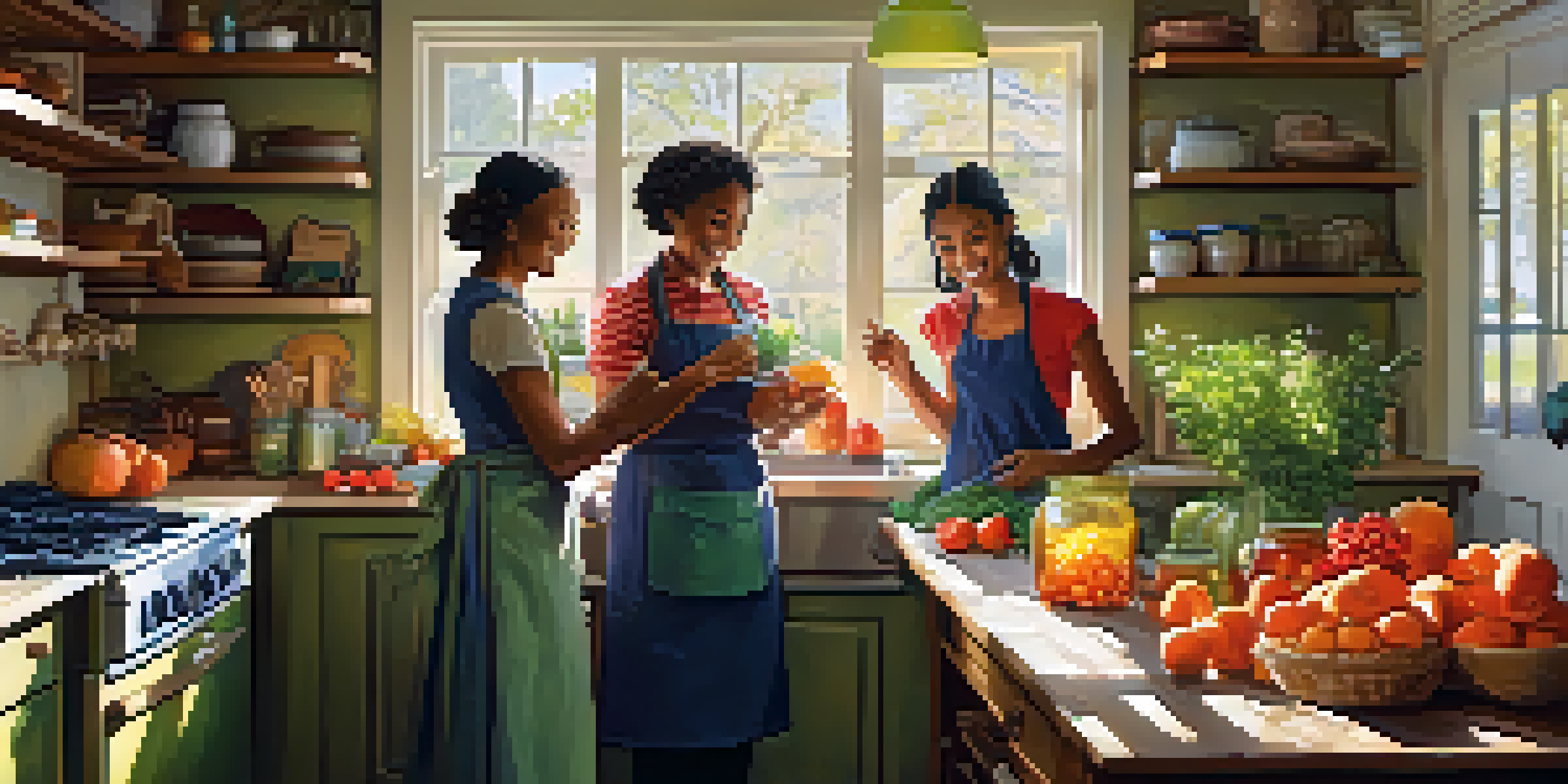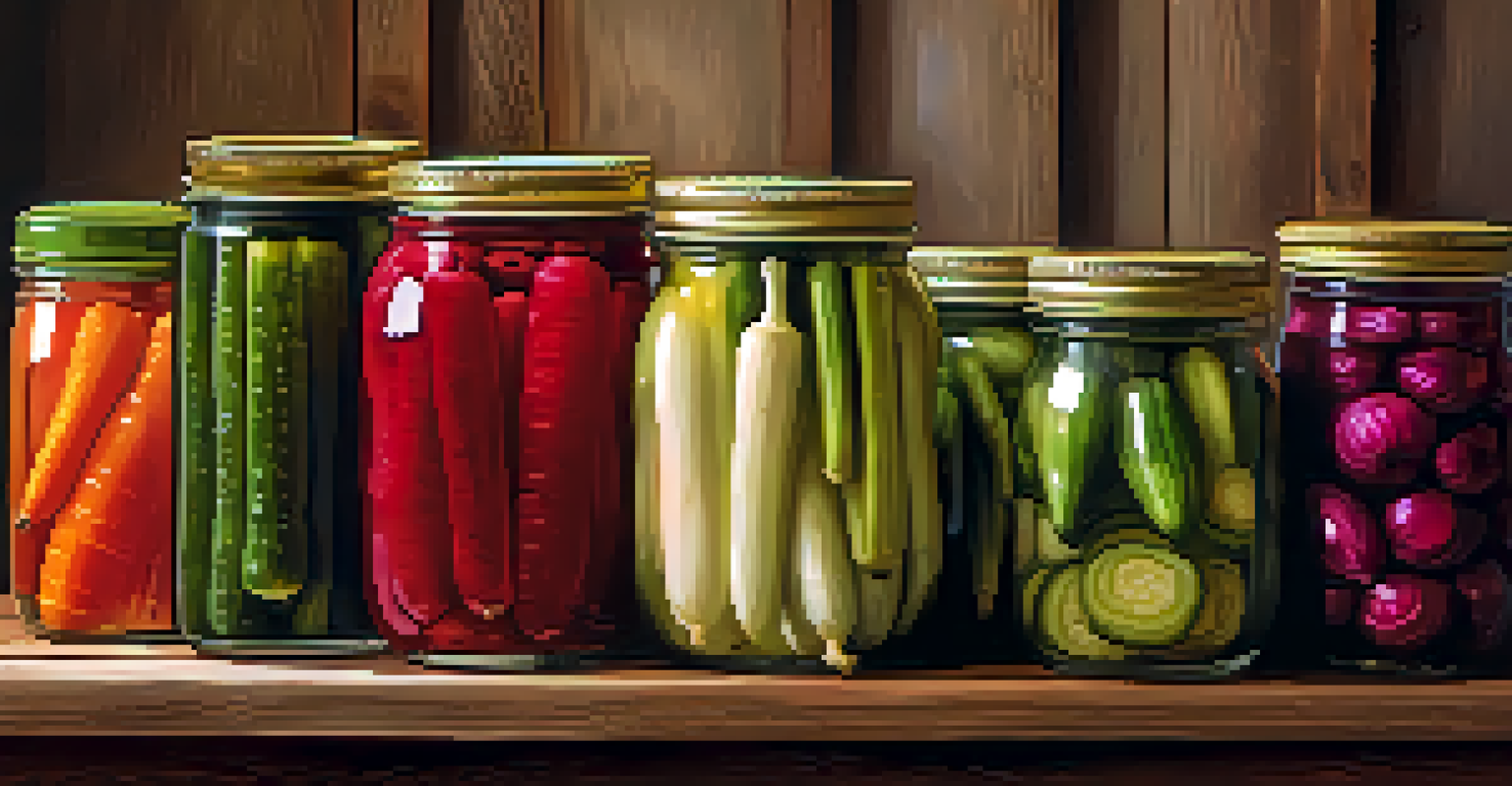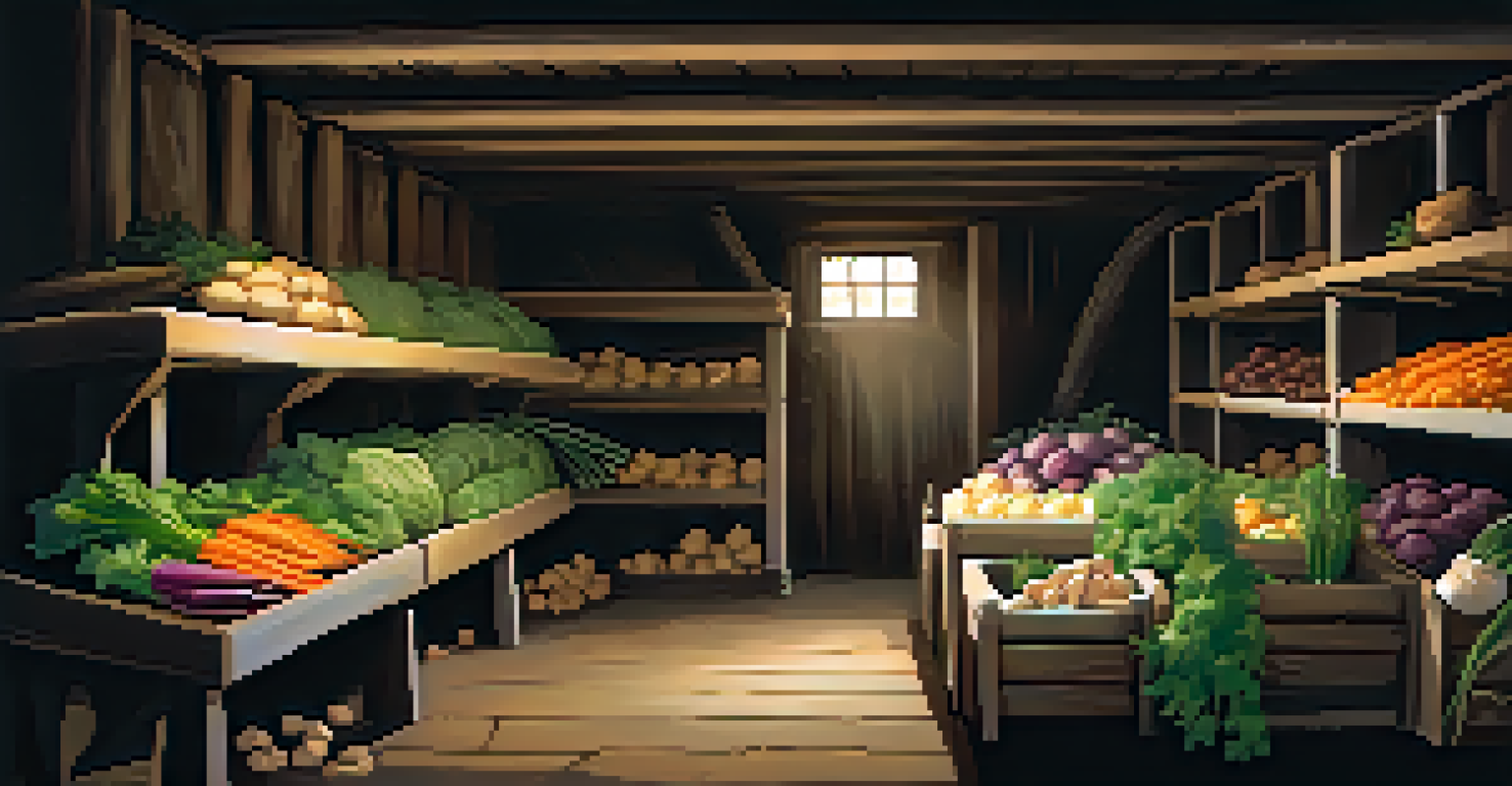Exploring Local Food Preservation Techniques for Sustainability

Understanding Food Preservation and Its Importance
Food preservation is the process of treating and handling food to stop or slow down spoilage. This is vital not just for reducing waste but also for ensuring that we have access to healthy, nutritious food throughout the year. By preserving food locally, we can support our communities and reduce reliance on industrial food systems.
Preservation is a way of honoring our food, our land, and our communities.
Sustainability in food preservation means using techniques that are environmentally friendly and reduce our carbon footprint. For instance, by choosing local produce and minimizing transportation needs, we help lessen the impact of food miles. This approach not only benefits the environment but also strengthens local economies.
Moreover, embracing food preservation helps us connect with our heritage and traditions. Many cultures have developed unique methods for preserving food that reflect their local resources and climate. By exploring these techniques, we not only learn about sustainability but also celebrate the rich tapestry of our culinary history.
Canning: A Time-Honored Preservation Method
Canning is one of the most popular preservation methods, allowing us to store seasonal fruits and vegetables for year-round enjoyment. By sealing food in jars and heating them to kill bacteria, canning creates a vacuum that keeps food fresh. This technique can be a fun and rewarding way for families to bond over preparing their favorite dishes.

However, it's essential to follow safety guidelines when canning to prevent foodborne illnesses. Using proper techniques, such as pressure canning for low-acid foods, ensures that the food remains safe to consume. This attention to detail is not just about food safety; it’s about caring for ourselves and our loved ones.
Food Preservation Enhances Sustainability
By utilizing local food preservation methods, we support community economies and minimize our environmental impact.
As you explore canning, consider experimenting with local ingredients. Whether it's tomatoes from your community garden or berries from a nearby farm, using local produce helps you appreciate the flavors of your region while reducing your environmental impact.
Fermentation: A Flavorful Way to Preserve Foods
Fermentation is another exciting method of food preservation that turns raw ingredients into flavorful delights. Think of tangy sauerkraut or zesty kimchi—these foods not only last longer but also offer numerous health benefits. The process involves using beneficial bacteria to break down sugars, creating complex flavors and improving digestibility.
The act of preserving food is much more than storage; it is about connection— to our roots, our land, and our history.
The beauty of fermentation lies in its simplicity; all you need are a few basic ingredients and some patience. Plus, it’s a great way to involve the whole family in food preparation. Kids can learn about science while watching the fermentation process unfold, making it an educational experience as well.
Moreover, fermented foods are packed with probiotics, which can boost gut health and overall well-being. By incorporating fermentation into your preservation toolkit, you can enjoy both the taste and health benefits of these vibrant, local foods.
Drying: A Simple and Effective Preservation Technique
Drying is one of the oldest methods of food preservation, and it’s incredibly straightforward. By removing moisture from fruits, vegetables, or herbs, we inhibit the growth of bacteria and mold, ensuring that these foods last longer. Whether you choose to air-dry or use an electric dehydrator, the process is accessible for everyone.
This technique is especially useful for preserving the harvest from your garden or local farmer's market. Imagine enjoying sun-dried tomatoes or dried apples in the middle of winter, reminding you of warmer days. It’s a fantastic way to make the most of seasonal produce, helping reduce food waste.
Canning and Fermentation for Flavor
Canning and fermentation not only prolong the shelf life of foods but also enhance their flavors and health benefits.
Additionally, dried foods make for convenient snacks packed with flavor and nutrients. By preparing these snacks at home, you not only control the ingredients but also minimize packaging waste, further contributing to your sustainable lifestyle.
Pickling: A Tangy Twist on Preservation
Pickling is another creative way to preserve food, offering a delightful tanginess to your meals. This process typically involves soaking foods in vinegar, brine, or other acidic solutions, which can enhance flavors while extending shelf life. From pickled cucumbers to beets, the variety of pickled foods is virtually endless.
What’s great about pickling is that you can customize the flavors according to your preferences. Adding herbs, spices, or even garlic can transform a simple vegetable into a gourmet treat. This personalization allows you to experiment with taste while utilizing local produce, making it a sustainable choice.
Furthermore, pickled foods are not only tasty but also provide a burst of nutrition. The acidity helps preserve vitamins and minerals, ensuring that you still get the benefits of the fresh produce long after harvest season.
Root Cellaring: Nature's Refrigerator
Root cellaring is an age-old technique that takes advantage of cool, dark spaces to store root vegetables and other produce. By creating a stable environment with the right temperature and humidity levels, you can extend the shelf life of seasonal harvests naturally. This method is an excellent way to utilize your basement or pantry effectively.
The beauty of root cellaring is its simplicity and low energy use. Unlike modern refrigeration, which consumes electricity, root cellars rely on the natural conditions of the earth. This not only saves on energy costs but also provides an eco-friendly alternative to keeping your food fresh.
Community Building Through Preservation
Engaging in food preservation fosters community connections and shared knowledge, promoting sustainable practices.
Moreover, root cellaring allows you to enjoy the flavors of your garden throughout the colder months, reducing dependence on grocery store produce. It’s a gratifying way to embrace seasonal eating while minimizing waste and environmental impact.
Creating Community Through Food Preservation
Food preservation isn’t just a solo endeavor; it can foster community connections and collaboration. Consider hosting workshops or potlucks where neighbors come together to share their favorite preservation techniques. This not only spreads knowledge but also builds friendships and strengthens local bonds.
Communities can also establish preservation co-ops, where members pool resources to invest in equipment or ingredients. This collaborative approach makes it easier for everyone to access tools like canners or dehydrators, making food preservation more accessible. Plus, sharing the fruits of your labor can create a sense of shared success.

By engaging with others in food preservation efforts, we promote sustainable practices while celebrating the diversity of our local foods. This shared experience can lead to deeper appreciation for the food we consume and the environment in which it is grown.